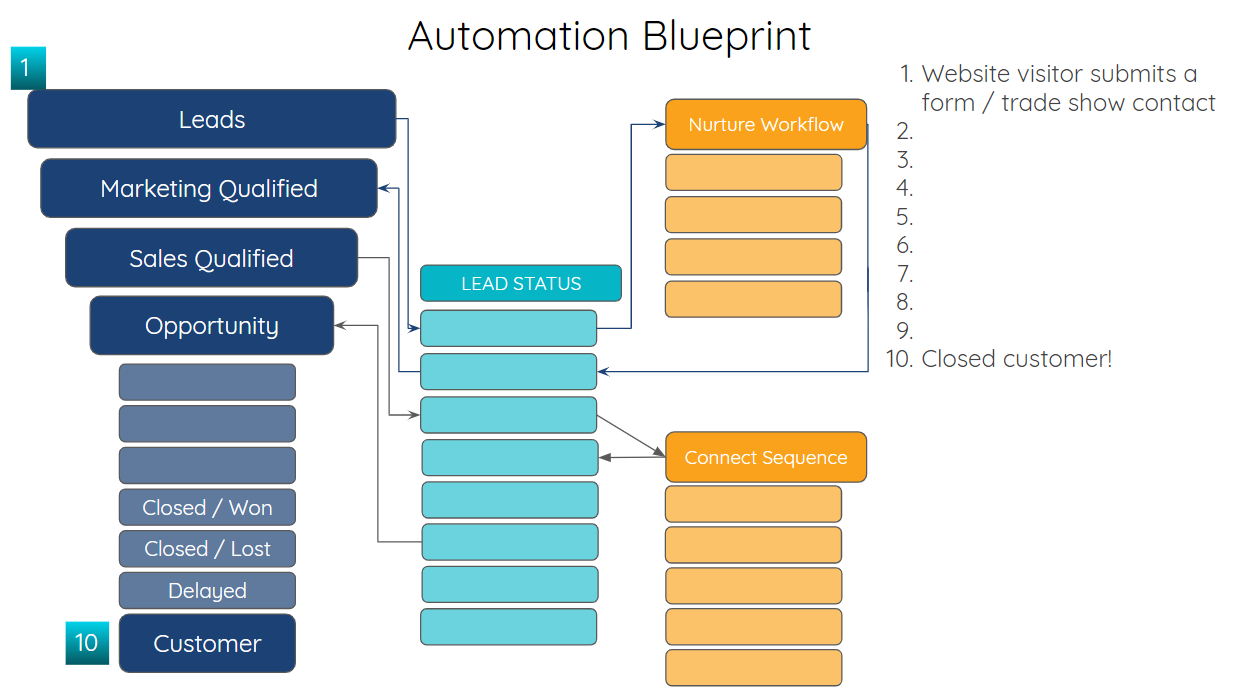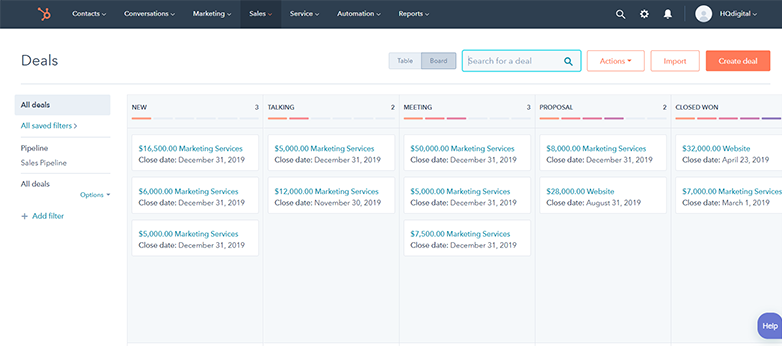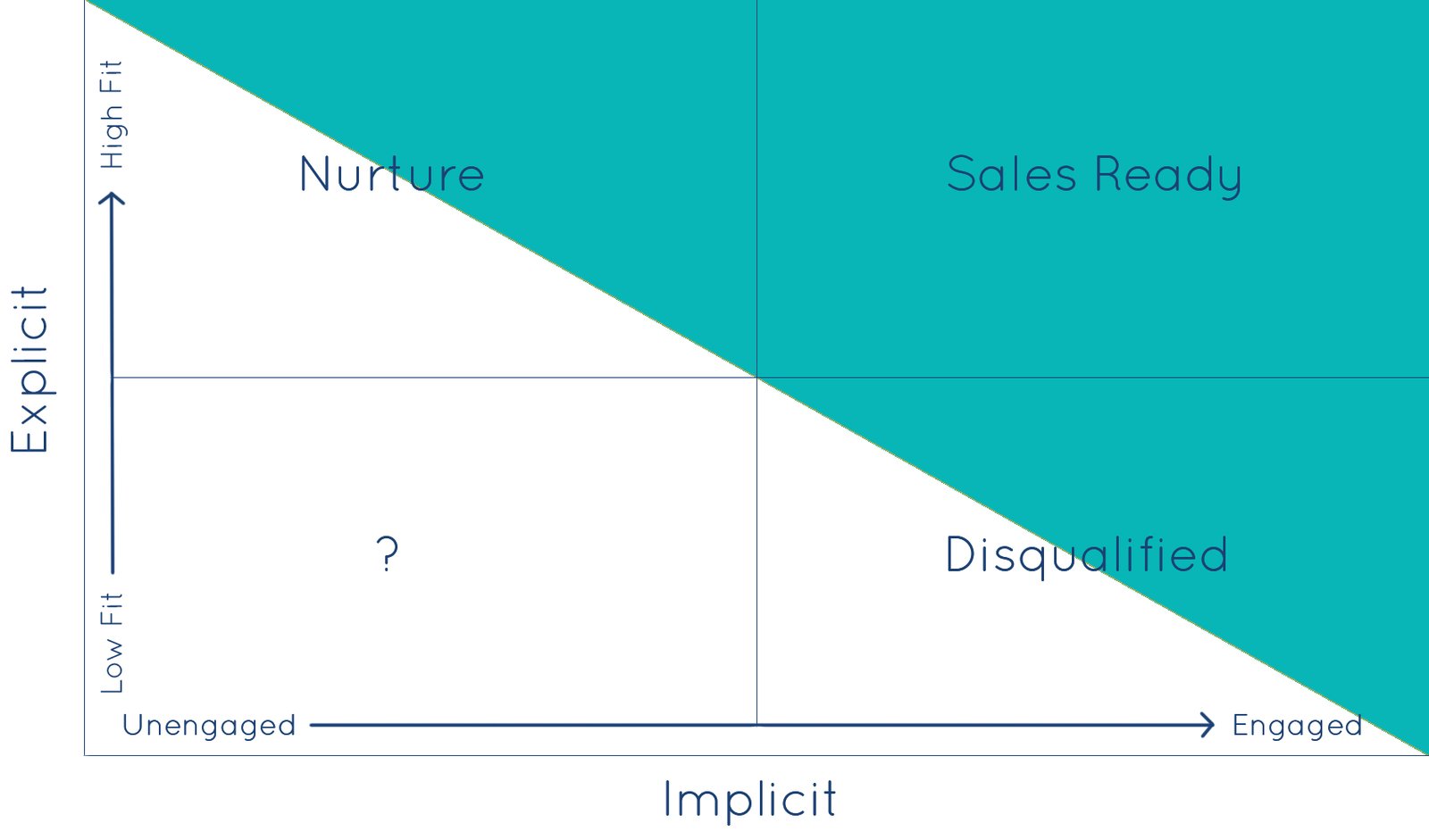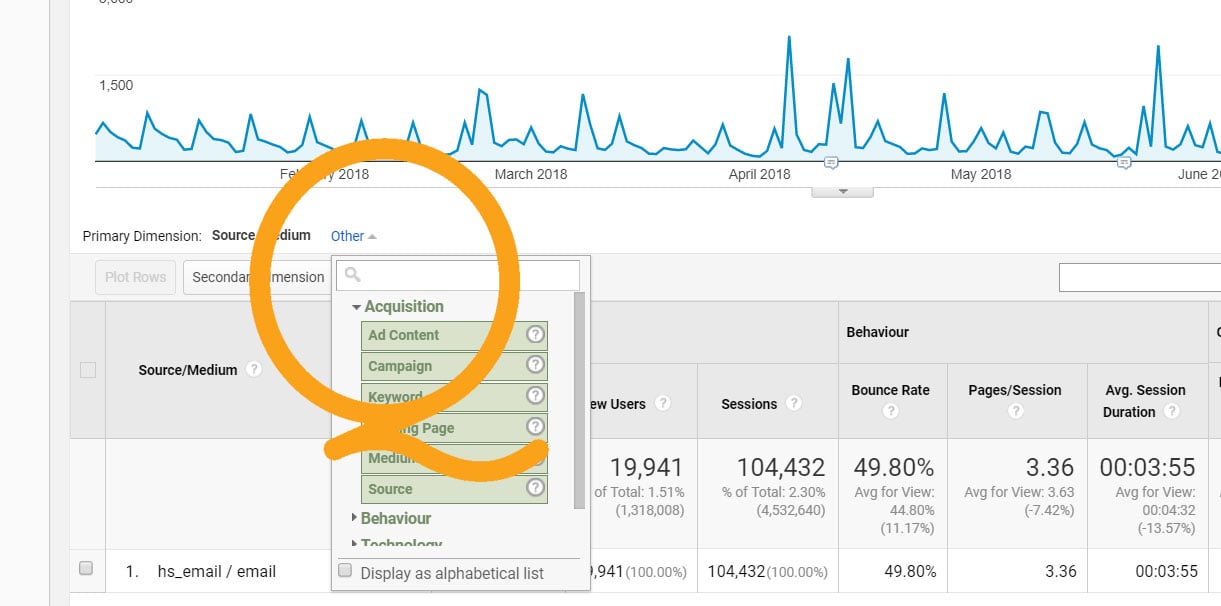
Websites can serve a number of different purposes. But, if your B2B website isn't helping you to acquire new customers, then it's not doing its job.
Almost all companies have a website, which is a great start. Some even look really nice. But just having a nice-looking website isn't enough to generate leads and acquire new customers for most businesses. You need to take a strategic approach to attracting visitors, converting leads, and closing customers in order to truly impact revenue growth in real life (IRL).
Sales and marketing leaders should leverage their most valuable digital asset to generate leads and acquire customers, and your website has the potential to be your most powerful sales and marketing tool. This is true even for companies that handle the majority of their sales process offline - on the phone with a sales rep, for example.
Regardless of your industry or audience, the elements required to turn your website into a lead generation and customer acquisition tool are essentially the same. Implement these steps to start using your B2B website to generate leads and close customers.
Step 1 - Attract Your Audience
Generating a steady stream of qualified traffic is the first step to acquiring customers from your website. If you're already generating healthy website traffic, you have a head start. Skip ahead to the next section.
Otherwise, you need a plan to attract a well-defined, highly targeted audience to your website. Start by creating target personas for your website that represent the ideal customers you want to attract. Your website's messaging and content should be developed with these personas specifically in mind.
Once you’ve defined your audience, there are a variety of tactics you can explore to generate an increase in website traffic. The right mix of these tactics will depend on a number of factors, including the state of your industry, quality and quantity of existing marketing assets, availability of internal resources, and the aggressiveness of your customer acquisition goals.
Blogging
Companies that blog get 55% more website visitors. If you're looking to generate more website traffic, your blog is the best place to start.
Your blog provides your target audience with valuable and thoughtful content that they can't find anywhere else. Keep your blog posts entirely educational. Write on topics that answer your target personas' most frequently-asked questions at all stages of the marketing and sales funnel.
Conclude your educational blog posts with a call-to-action (CTA) that provides a conversion opportunity for readers who are ready to take the next step.
SEO
Optimize all of your website content for search according to SEO best practices. Conduct keyword research to make informed decisions about verbiage for your page titles, meta descriptions, and website copy.
Always write for human visitors first, and search engines second. Search algorithms are continually refined to return websites that provide a good user experience.
Email Marketing
If your company has ever had an email database (most have), make sure you're not letting potential new customers just sit dormant. Use email marketing to engage your database and drive interested readers to your website.
For best results, segment your list according to industry, interest, or job title - whatever works best for your company. Send tailored content to the appropriate segments, and always seek to add value. Personalize emails to come from an individual in your organization - the lead's assigned sales rep, for example, for best results.
Social Media
Social media is a great way to generate brand awareness and qualified website traffic if your target audience spends time there. Most audiences do.
Use your company's corporate pages to share a helpful mix of content from your own brand and from trusted thought leaders in your industry.
Social media platforms also offer paid advertising campaigns to show ads or sponsored content to a highly targeted audience at a cost-per-click or cost-per-impression budget that you set. Social media advertising is appealing due to its ability to target audiences so specifically based on the demographic data that these platforms collect on their members.
Digital Advertising
Digital advertising can be a good way to jumpstart revenue generation. Pay-per-click campaigns like Google AdWords and BingAds let you strategically bid on keywords relevant to your business and drive users to your site.
For best results, drive users to conversion-optimized landing pages on your site that present a valuable offer in exchange for a form submission.
Offline Activities
Include your website URL on your business card, in your email signature, on your social media profiles, in your trade show booth, on your printed marketing collateral, and anywhere else you can think of that might result in sending qualified traffic to your website. Use tracking URLs to generate a unique identifier to use on your different assets so that you can more precisely track performance within your website analytics.
Step 2 - Convert Website Visitors into Leads
A high-volume of website traffic is a good start, but you need to successfully convert visitors into leads if they are going to ultimately become customers.
To accomplish this, you’ll need to create a series of interesting and relevant conversion points and strategically place them throughout your website. It can take time, but commit to build a library with a mix of educational and promotional content that is unique to your brand. You need a robust library of high-quality content that is interesting and valuable to your target audience to make the most of your website.
Develop content that answers common questions and provides solutions for your personas throughout their buyer’s journey. Be sure to include content for users who are at each stage of the funnel, as they will have different questions and concerns.
Here are some examples of content types that work particularly well at certain funnel stages:
| Top | Middle | Bottom |
| How-To Guides | Webinars | Demos |
| Whitepapers | Quizzes | Trials |
| Checklists | Case Studies | Pricing Guides |
| Infographics | Product Videos | Consultations |
For each piece of content, you should create conversion points using CTAs, landing pages, and forms.
Calls-to-Action
If you don't have a call-to-action on your home page, start there. A website's home page is usually its most viewed page and is therefore your most valuable piece of digital real estate. Give visitors an obvious and easy opportunity to convert right away when they land there.
Next, add CTAs to the pages on your website and blog posts that get the most views. Offer related content or prompt visitors to take the next step in their journey to becoming a customer.
Use contrasting colors from your website and write in and simple, action-oriented language when building your CTAs. You can use a free tool like Canva to design good-looking CTA buttons, even with no graphic design experience whatsoever.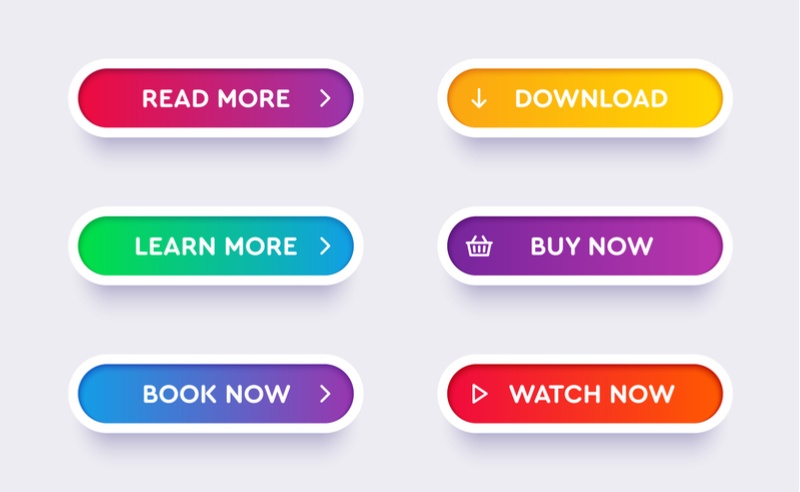
Landing Pages and Forms
Use your CTAs to point visitors to landing pages that are built specifically for lead conversion using forms. Add a form to these landing pages for your visitors to enter their contact information in exchange for your content.
Ask for minimal contact information, like email address, first name, and last name, for top-of-the-funnel content. You can require additional information, like phone number and company name, for middle- or bottom-of-the-funnel offers.
When designing your landing pages, keep the following best practices in mind:
- Remove the user's navigation until post-form submission.
- Use headlines and bullets to make the content easily skimmable.
- Include an image or video that represents the content you're offering.
- Add social media icons so your content can be shared easily.

Step 3 - Nurture Leads into Opportunities
Marketing automation software is a must-have for companies who are serious about improving customer acquisition from their website.
Most leads who enter your database aren't ready to buy immediately, even if they are qualified. Using marketing automation, design lead nurturing campaigns that keep prospects engaged and provide them with unique, valuable content until they become ready to make a purchasing decision.
Design different nurture tracks for your different target personas, events, industries or other categories that make sense for your business and its goals. Offer content that keeps leads warm and moves them further down the funnel.
The result will be more sales-ready leads that your reps are sure to appreciate. These leads will be warmed up, engaged with your brand, and educated about your products or services.
Step 4 - Close Customers
The same tools you use to nurture leads can be used to automate your sales process and functions. Arm your sales team with powerful data, insights, and lead intelligence to help them close more deals.
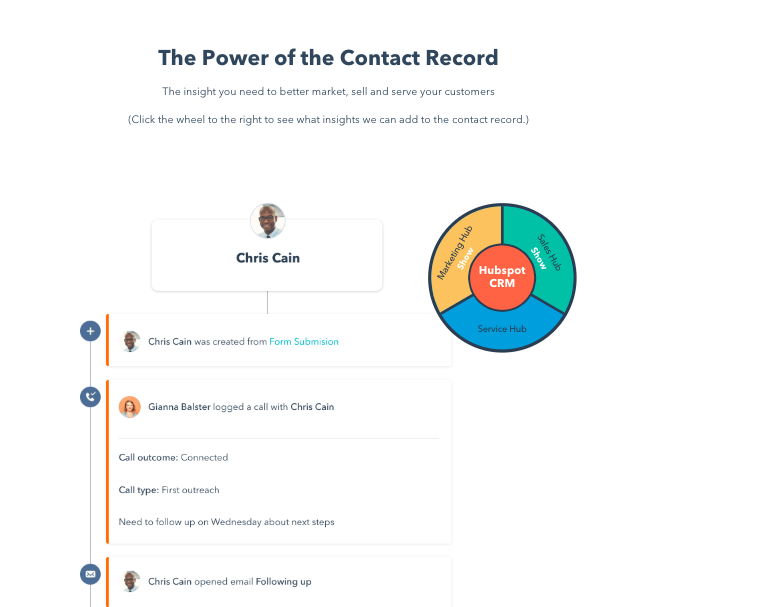
(Image credit: HubSpot)
Your sales reps can view a complete contact record for any website lead, including a full, detailed history of the lead's interaction with your brand, website and team. This includes emails opened and clicked, website pages viewed, content downloaded, phone calls, and more. Integrate these systems with your CRM, or, for best results, use an all-in-one platform.
You can also use marketing automation software to automate delivery of relevant sales enablement content, like product videos, customer testimonials, or case studies to your prospects. Every interaction will be captured as part of the lead's contact record.
Sales reps can use this intelligence to personalize their outreach and inform their approach, increasing their close rates and shortening your average sales cycle.
Step 5: Optimize Everything
The true beauty of your website is that it generates a constant stream of invaluable data to inform your sales and marketing decisions. Using real-time data and A/B testing, you can optimize your website to deliver better results continuously over time.
Always identify, track, and measure key metrics that are important to reaching your revenue generation goals. Benchmark your site's current performance, and set monthly and quarterly goals. Make early predictions based on historical site performance and your planned website activities. Refine your predictions and goals over time as data comes in to inform your decisions.
Consider tracking metrics such as:
- Users
- Pageviews
- New vs. returning users
- Conversion rates - website, landing pages, blogs, and more
- Webinar registrations
- Newsletter signups
- Email open rates
- Blog views
- CTA clickthrough rates
- Lead-to-customer conversion rate
- Customer close rate
Track your analytics at least weekly, and more often if you can. Review reports with key members of your sales and marketing teams so you can all make informed data-driven decisions in your work and stay aligned in prioritizing your website goals.
Use this performance data to prioritize website optimization projects. Work on high-impact, low-effort areas for improvement first, and then tackle remaining initiatives based on what the data suggests you do next.
Make sure you allow enough data to come in before you start making changes, and only make small, incremental changes at a time. Test your team's hypotheses using A/B testing to ensure that any tweaks you're making are definitely improving overall results..
Roll out the steps above to improve your website, and you’ll be sure to see measurable improvement IRL in the form of increased website traffic, higher conversion rates, more leads, and more closed deals.
Get free, personalized, expert advice on generating better sales and marketing results from your website. Book a meeting instantly by clicking below.



